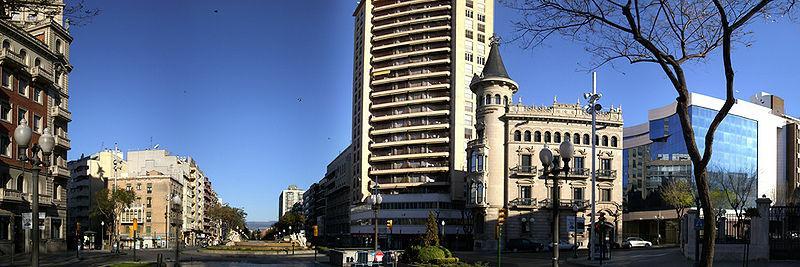Tarragona, Catalunha, Spain
Suggest Place to Visit
5297
Track to location with GPS |
 |
Tarragona owes its name to the Tarraco (Colonia Iulia Vrbs Triumphalis Tarraco) of the Romans, which was the first capital of Hispania Citerior in republican times and of the province of Hispania Tarraconensis during the Empire.
The Tarragona of the Hispanic Brand
Tarragona was occupied by the Arabs after the invasion of 711. Later, Charlemagne created the Hispanic Brand, occupying the eastern and northern part of present-day Catalonia, Tarragona, Barcelona and Gerona. In 985 a raid from Almanzor burned Barcelona and occupied Tarragona, definitely reconquered in 1116 by Ramón Berenguer III.
Medieval Tarragona (XII-XV centuries)
In 1129 San Olegario, archbishop of Tarragona, ceded the city as an ecclesiastical principality to the Norman mercenary Robert Bordet, who had served under the orders of Alfonso I of Aragon. On March 14, 1129, this knight was appointed prince of Tarragona by means of a vassalage pact. From the infection of the Principality of Tarragona, the Normans, commanded by Bordet, settled in the city. Robert Bordet took advantage of an ancient Roman tower still standing, the current Praetorium Tower, to establish his castle. Thus began a first process of colonization of the city, led on the ground by Robert, but controlled from Barcelona by the archbishop.
The situation in the city was complicated by the death of San Olegario. In 1146, his successor, Bernat Tort, a henchman of the Count of Barcelona, settled in the city. Thus began a process marked by continuous jurisdictional conflicts that culminated in the extinction of the principality and the restitution to the Count of Barcelona in 1151.
Tarragona at the end of the 12th century was already a fully consolidated urban nucleus that had become the directing center of a large territory. By 1148 the local government had been reorganized and the council of city dwellers was heavily involved in urban life. The city grew and occupied the entire internal area of the Tarraco Forum, thus maintaining the architectural structure inherited from Roman times. The 12th century city arose outside the area of great monuments, around the stately castles. From 1146 onwards, the area of the Roman period cult enclosure was occupied, a sector that took on special importance with the beginning of the construction of the Cathedral in 1171, and which became the backbone of the city from its consecration in 1331. The interior of the great square of the Roman Forum was developed at the end of the 12th century.
Outside the defensive enclosure of this early period there were three clearly differentiated areas: first, the Corral, the old Roman circus, which became an extra-wall borough with a minimum of population and mainly used for commercial and industrial activities. Secondly, Vila Nova, which was the area that stretched from the Corral to the port and was basically destined for orchards, crops, herrenales and mills. Unlike the first, it was not very inhabited, except in the port area and in the area closest to the Corral. Finally, the garden of Tarragona, also destined for agricultural exploitation, which extended on both sides of the Francolí and reached Riu Clar.
The spread of the bubonic plague throughout Europe marked the beginning of a major period of demographic recession. The epidemic reached the city between May and July 1348, causing a great death toll. The decline in population and the general crisis in which the city found itself caused the urban nucleus to enter an important recessive process. The decrease in the number of fires was reflected in a smaller number of occupied houses. Despite this, in 1368 the city, following the guidelines set by the Crown, began the maintenance and reinforcement of the city walls by building the Muralleta or Mur Nou (New Wall), at the height of the facade of the circus. In this way, the Corral area, the old Roman circus, was incorporated into the urban nucleus.
The political situation worsened throughout the first half of the 15th century. The differences between the Generalitat of Catalonia and Juan II of Aragon provoked a Catalan civil war, in which the archbishop sided with the royalists, while the Municipal Council, after a period of prudence, allied itself with the Generalitat.
On October 17, 1462, the troops of Juan II arrived in Tarragona to besiege the city. The effects of the war were visible in the city for a long time. The war plunged Tarragona into the most absolute decline. The defenses of the city, especially in the Mur Nou sector, were very deteriorated, as well as those of the Corral area. The population dropped dramatically and the municipality went bankrupt. The effects of the war were visible in the city for a long time.
16th-18th centuries
The life of the city of Tarragona during modern times is marked by three major war conflicts. Since the 16th century, fortifications have been built or consolidated to defend the city and its surroundings from continuous wars and pirate attacks. From the War of the Reapers and until the mid-19th century, Tarragona was a stronghold, which meant that the fortifications could not be destroyed and a space had to be left in front of the wall free of buildings, with the difficulties that this entailed. for urban expansion. The epidemics were a constant in this period and caused great deaths and the exodus of the population.
The War of the Reapers, in which the Catalans and French fought on the one hand and the Hispanic monarchy on the other, began in 1640 and ended in 1659. The strategic location of Tarragona was the cause of which it suffered two important sites, in 1641 and in 1644, which led to serious destruction of buildings and the consequent prostration and economic decline of the city. The port suffered significant damage and was abandoned for a long time, so trade was diverted to the port of Salou. The economy of Camp de Tarragona entered a serious crisis from which it did not recover until the end of the 18th century, when the reconstruction of the port was authorized and permission was granted to trade freely with America.
The second great warlike conflict that the city suffered was the War of Succession (1702-1714) that reached the city when it had not yet recovered from the ravages of the War of the Reapers. Tarragona was defended by a British garrison that improved the defensive system with the construction of the Falsa Braga and other forts and bastions, most of which are currently missing.
Tarragona is a city and municipality in the south of Catalonia, Spain, capital of the Province of Tarragona and the region of Tarragonés. During medieval and modern times, it was the capital of the Veguería de Tarragona.
The municipality, with a population of 140,323 inhabitants (INE register on January 1, 2009), is in turn part of the Tarragona Metropolitan Area, with 456,042 inhabitants (2009) and of the Territorial Functional Area (AFT) of Camp de Tarragona , with 675,000 inhabitants (2009) and the second most populated area in Catalonia according to the Generalitat's territorial Plan.
Economic, intellectual and cultural capital of southern Catalonia, its influence exceeds provincial limits. It houses the largest petrochemical center in Spain, and since 2008 the Catalan Institute for Chemical Research, in which various multinational companies collaborate in R&D tasks. The city center is 13 km from the airport, with 27 regular national and international lines and the fastest growing in Spain in 2008. The AVE and its three stations in the city, and a regional train station and large lines, connect Tarragona with Madrid, Barcelona, Zaragoza, Valencia and France in a short time.The port of Tarragona is classified as the first commercial and freight port in Spain. The consolidation of the banking and financial market in Tarragona happened through the merger of Catalan entities and locating their headquarters in the city.
Its location on the shores of the Mediterranean on the Costa Dorada, with warm water beaches, as well as its recreational centers and historical tradition and artistic heritage, make it a center of first-rate tourist attraction. Its origin dates back to the ancient Roman Tarraco, capital of Hispania Citerior Tarraconensis. The "Archaeological Ensemble of Tarraco" has made Tarragona, along with twelve other Spanish towns, considered a World Heritage Site by Unesco. Its character as a diplomatic post is reinforced with three general consulates.
In its cultural activity, the Labor University and the Rovira y Virgili University stand out, which provide it with an intense student life with its more than 25,000 students. Its religious heritage, with its seminary, episcopal palace and Cathedral was in 2008 the meeting point of the Jubilee Year, turning the city into a pilgrimage place on the Camino de Santiago.
Tarragona will host the 2010 European Youth Games, in addition to being a candidate for the Mediterranean Olympic Games in 2017 and the European Capital of Culture in 2016.
Featured places
The archaeological complex that forms the Roman ruins of Tarraco was declared a World Heritage Site by Unesco in 2000, with fourteen different sites.
The Old Town. In the upper part of the city, it coincides with the former Provincial Forum of Tarraco. It is surrounded by the Roman Wall, whose length towards the 3rd century BC. C. was about 4 km. However, today only about 1 km and an original voussoir door remain. The Old Town, popularly known as ´´Part Alta´´, is today one of the most visited areas by both tourists and locals thanks to the gastronomic and leisure offer that it offers.
The Amphitheater of Tarraco. From the 1st century, inside it also preserves remains of a Visigoth basilica and a Romanesque church.
The central market. Modernist building from 1915, designed by the architect Josep Maria Pujol de Barberá.
The Balcony of the Mediterranean. Viewpoint located on a cliff at the edge of the sea, at the end of Rambla Nova. It is bordered by an old wrought iron railing forged by Joan Miquel Guinart, at the beginning of the 20th century. From it you can see part of the city, the port, the station, the amphitheater, the beach and La Punta del Milagro from a height of 40 meters, as well as a magnificent panoramic view of the sea, on whose horizon on clear days, you can appreciate the curvature of the Earth. La Punta del Milagro is also the setting where the famous Tarragona International Fireworks Castles Contest is held every year in July, for six nights, in which important Spanish and foreign pyrotechnic companies participate, and which has become in the Mediterranean reference contest.
The ´´Roman Circus of Tarraco´´. Within the old part of the city, we find today the archaeological remains of what was once the circus, which featured chariot races. They can be visited in different establishments in the city; as well as what is known as ´´capçalera´´, the final curve of the route. The ´´carceres´´, where the exit was, are under the foundations of the current Tarragona city hall, in the ´´Plaça de la Font´´.
Side view of the Cathedral of Tarragona
The cathedral is a magnificent example of a Christian religious temple begun around the 12th century. Its architectural style is somewhere between Romanesque and Gothic, finding in this peculiar building of the city a sound harmony of differentiated artistic styles, which make the whole a great building worthy of a prime episcopal see.
The Portal de San Antonio is a gate in the wall built in 1737, in stone and marble.
The House of the Festival of Tarragona is a cultural facility that allows to know throughout the year the identity elements of the Festivities of Santa Tecla de Tarragona and their ritual sequence, declared a Traditional Festival of National Interest by the Generalitat de Catalunya and a Festival of Tourist Interest National by the Government of Spain. Located in Vía Augusta number 4, it opened its doors in 2007 and permanently in 2008.
The Port of Tarragona one of the most important in Spain.
Metropol Theater. Architect Josep M Jujol, disciple of Gaudí and the Great Theater of Tarragona is a modernist work
Altar of Jesus i Maria by the architect Gaudí
The cathedral and the episcopal palace. Triumphal arch (arc de Roda) and escipions tower (Roman)
Events and Parties
Tarragona Carnival
The Tarragona Carnival dates back to the Saturnalia, Lupercal and midwife festivals celebrated by the Romans. The carnival continued to be celebrated during all periods of history, although it was prohibited at various times, but the most relevant was the prohibition during the Civil War that prohibited Carnival in all Francoist territories, this order would later be extended to all the Spanish territory. Characteristic of the Tarragona carnival is the placement of the Bóta in the town hall square that indicates the beginning and end (when all the Ninots are burned). Also characteristic are the streets of Ninots i Reis (with their respective retinues), the satires, the saraus, among many other elements. And at the end of the celebration the cream of the Ninots and the funeral parade of the Cremallers, i Ploraneres.
Procession of the Holy Burial: The Procession of Silence
The Procession of the Holy Burial is the most emblematic of those held in Tarragona. It is celebrated during the Holy Week festivities, on Good Friday, although in the past it was held on Holy Thursday.
On the afternoon of Good Friday, the steps are collected by the armats or armed, people characterized as Roman soldiers. Grouping all the steps in the Plaza del Rey, together with the brotherhoods that will accompany them, the meeting begins around 4:00 p.m. People can come closer while the processional queue forms that will leave around 7:30 p.m. Its journey through the streets of the old town give it a spectacular aesthetic. Around 5,000 people and 20 steps are involved, of which half are carried on the back.
This procession dates from 1550, organized by the Brotherhood of Blood, which was created in 1545 when the espadrilles and esparteros of the city joined together.
The armed men have been documented since 1758. They collect the steps before the procession and lead the procession. The cohort is made up of the centurion or Captain Manaya, a trumpet player, 6 timpani players, who are dressed in white capes, and 30 armed with red capes, shields and spears.
Declared Traditional Festival of National Interest.
The Pasos and the Brotherhoods that leave during this day are:
Roman Cohort
Black Flag of the Royal and Venerable Congregation of the Immaculate Blood with ´´matracas´´.
Aspirants of the Guild of ´´Marejants´´ with the pass ´´Santa Cena´´. Date of foundation of the Guild: 1759. Name of the passage: La Santa Cena. Artist: Emilio Solé Carcolé (Andorra), in 1994. Clothing: Black dress and blue bib and belt, which is a cord, with a tassel at each end; means chastity and recalls the whip with which Jesus was beaten. Theme: Represents the twelve apostles seated before Jesus at the moment of the creation of the Eucharist.
Association of Students of La Salle with the step ´´Oración en el Huerto´´. They have participated in the procession since 1907. Artists: Messeguer-Rius Workshop. Date: 1942. Clothing: Purple tunic with red cuffs, belt and bib; white collar. Theme: Jesus in prayer in the Garden of Gethsemane. The pass presents an olive tree that is renewed every year.
La Salle Alumni Association with the passage ´´Velad y Orad´´. Foundation date: 1918. Artist: C. Rius. Date: 1943. Clothing: purple and red. Accompaniment: La Salle's two steps, that of the students and that of the former students, are accompanied by a marching band. Theme: Jesus addresses the three apostles: Peter, James and John and said to them: ´´Watch and pray so as not to fall into temptation ... ´´
Fishermen's Brotherhood with the passage ´´Prendimiento de Jesús´´.
Tarragona International Dixieland Festival [edit]
The week before Easter: the only event dedicated to the origins of jazz in Spain and one of the principles of Europe.
Tarraco Alive
Event during the last two weeks of May with which the city returns to classical times, with Roman legionaries, crafts, food ...
Tarragona International Fireworks Castles Contest
The first full week of July: it is the reference event in the Mediterranean Sea.
Festivities of San Magín
The small festival of the city, between August 16 and 19.
Festivities of Santa Tecla
The big festival of the city, between September 15 and 24, declared of national tourist interest by the Government of Spain and a traditional festival of national interest by the Generalitat of Catalonia
Comments
We don´t have yet any comments about:
Tarragona
Tarragona
Be the first to leave a comment as it is very important to inform other people
Outros locais a visitar
Within a radius of 20 km from:Tarragona
Casa Castellarnau |
| 1,8 Km |
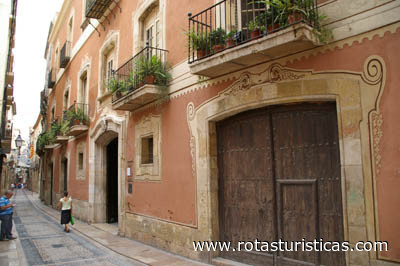 |
Archeological Museum of Tarragona |
| 1,9 Km |
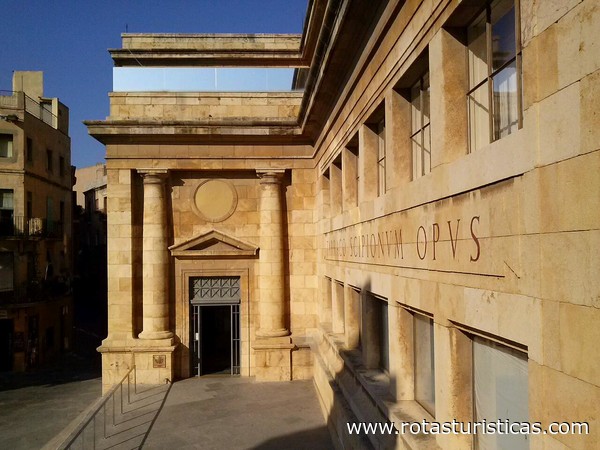 |
Museu D'Art Modern De Tarragona |
| 2,0 Km |
 |
Portail de San Antonio (Tarragone) |
| 2,3 Km |
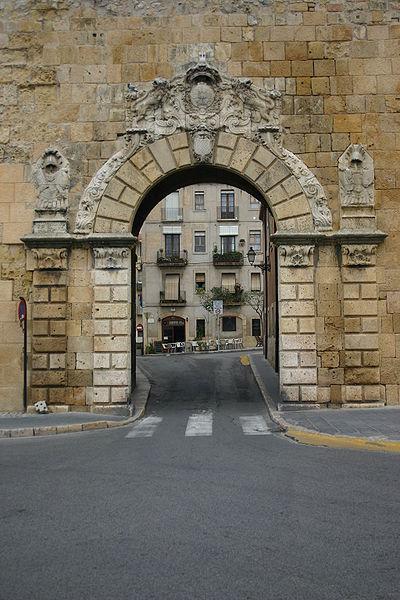 |
Costa Caribe Aquatic Park |
| 7,5 Km |
 |
Bosc Aventura Salou |
| 8,5 Km |
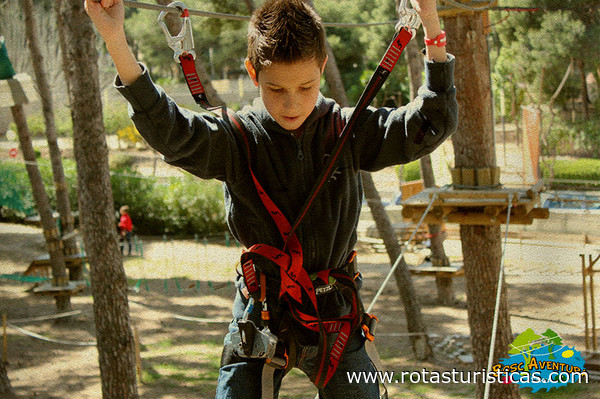 |
Karting Salou |
| 9,4 Km |
 |
Santa María del Mar |
| 9,8 Km |
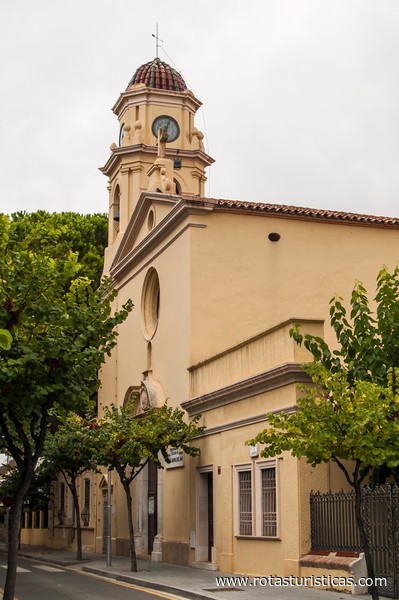 |
GAUDÍ CENTRE REUS |
| 12,3 Km |
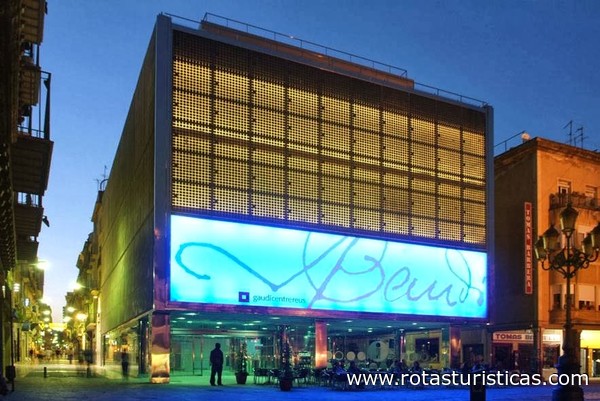 |
La ville de Cambrils |
| 15,7 Km |
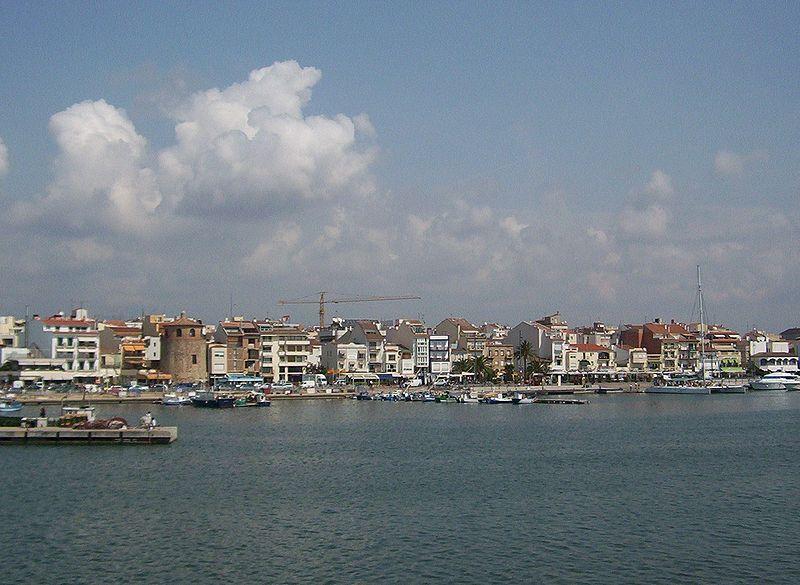 |
Hotel reservation near Tarragona within a radius of 20 km
Why to book with ROUTES TOURISTIQUES
The best prices
Our partnerships with the world´s largest operators offer research on the best market prices.
More options
At Rotas Turisticos you can book the hotel, buy the air ticket, book the transfer from the airport to the hotel and vice versa, book the local excursions, rent the car, take travel insurance and consult the places to visit and where to go.
Holiday Tips & Destinations
Hundreds of holiday destinations with all the options that allow you to easily choose the destination that best suits your dream vacation.
ROUTES TOURISTIQUES
Links


